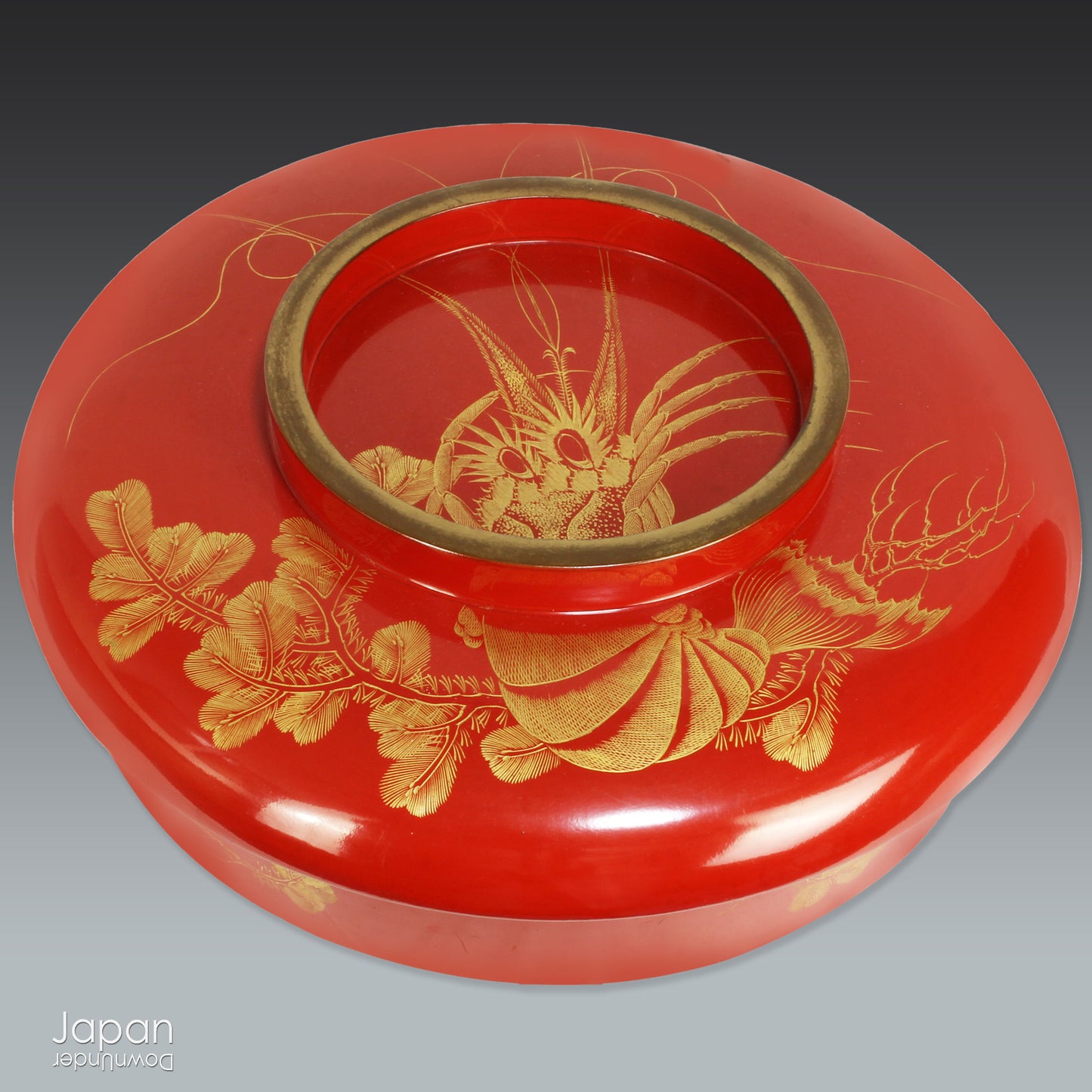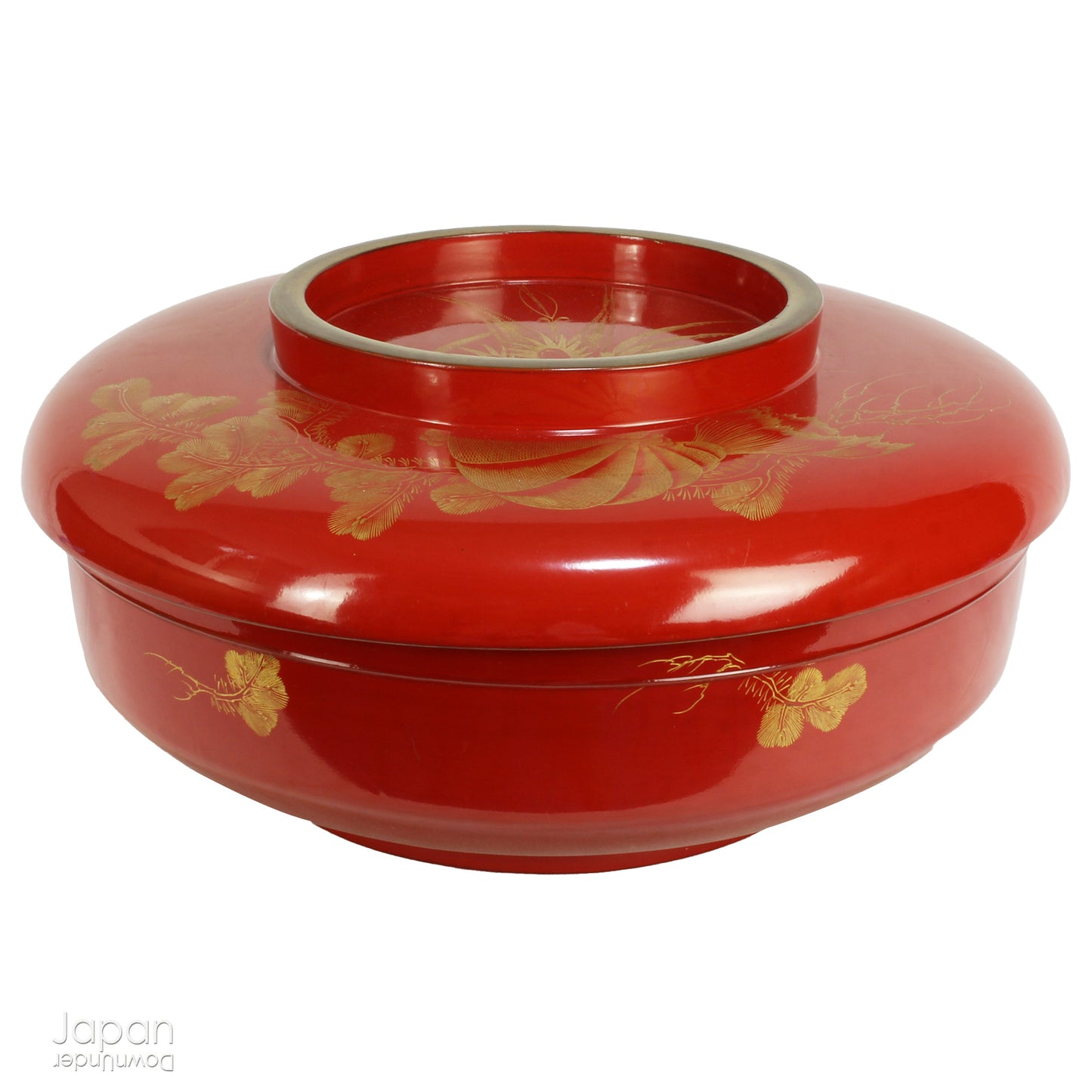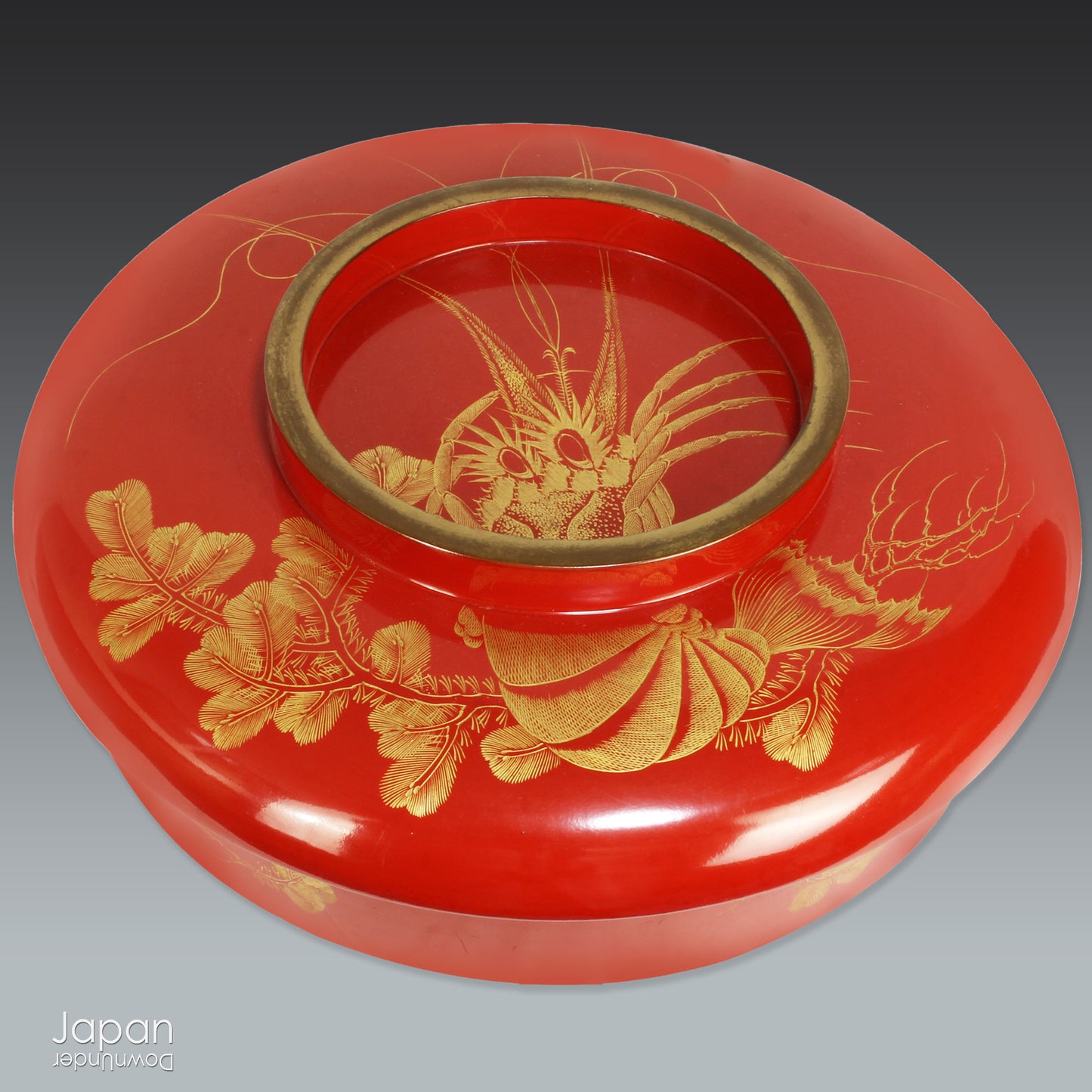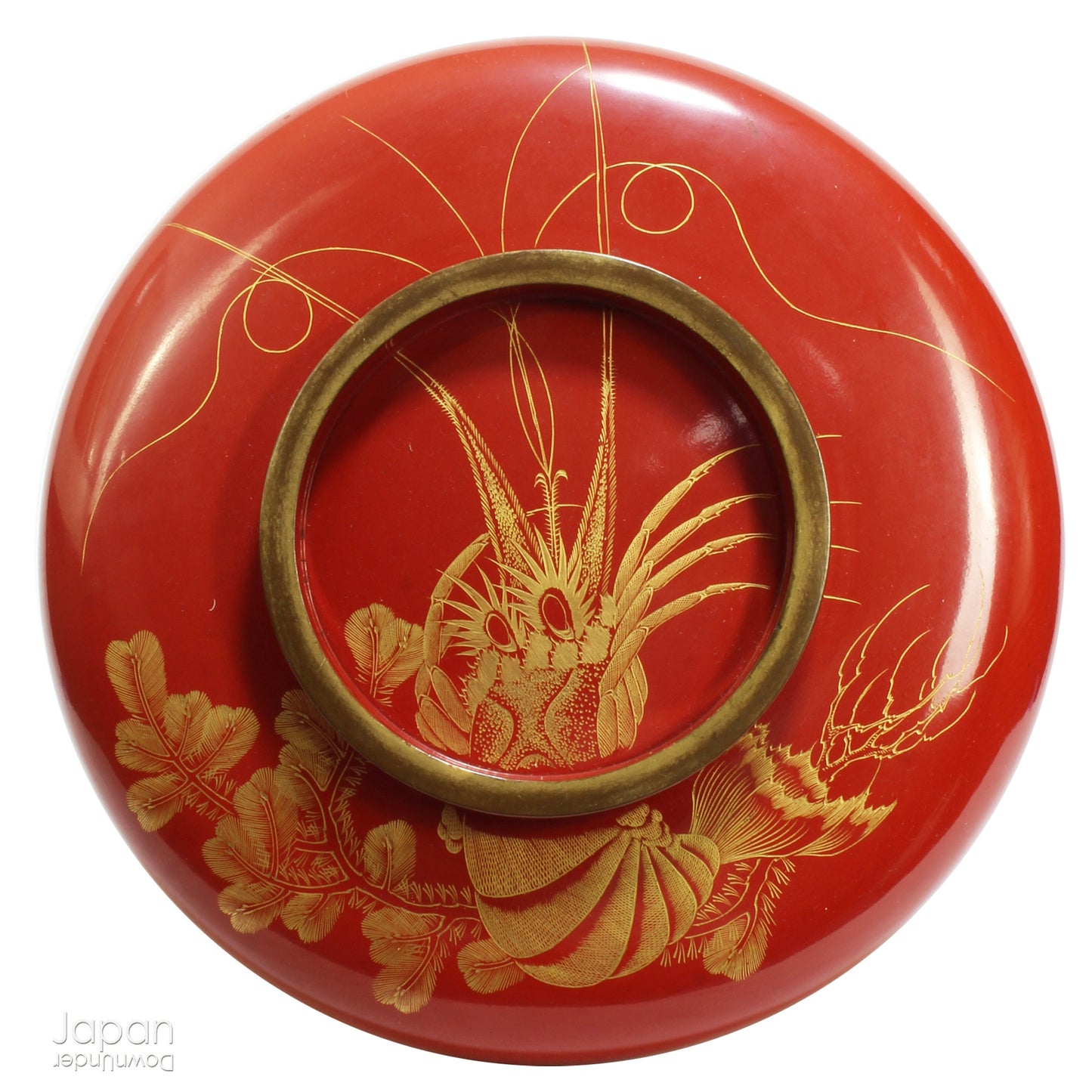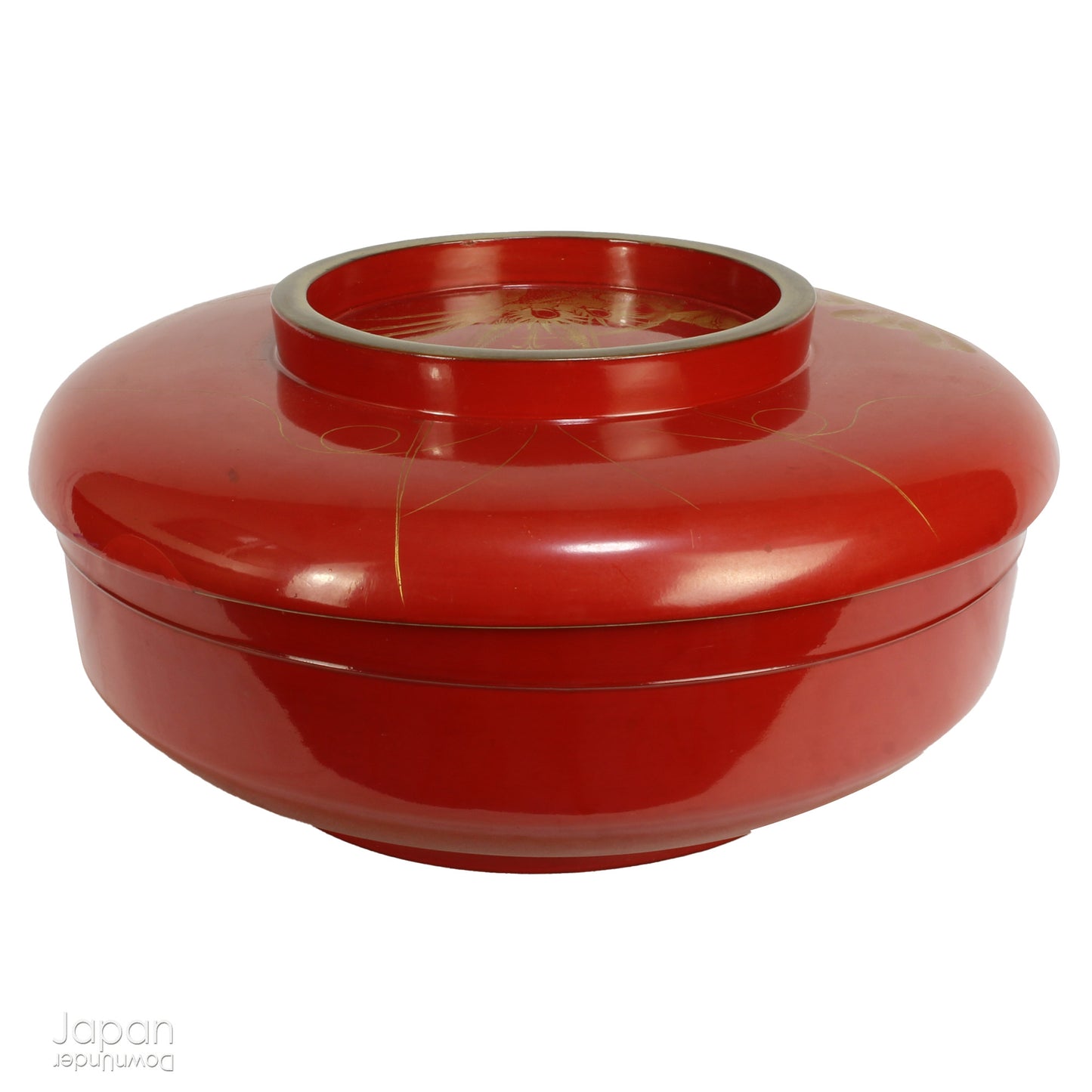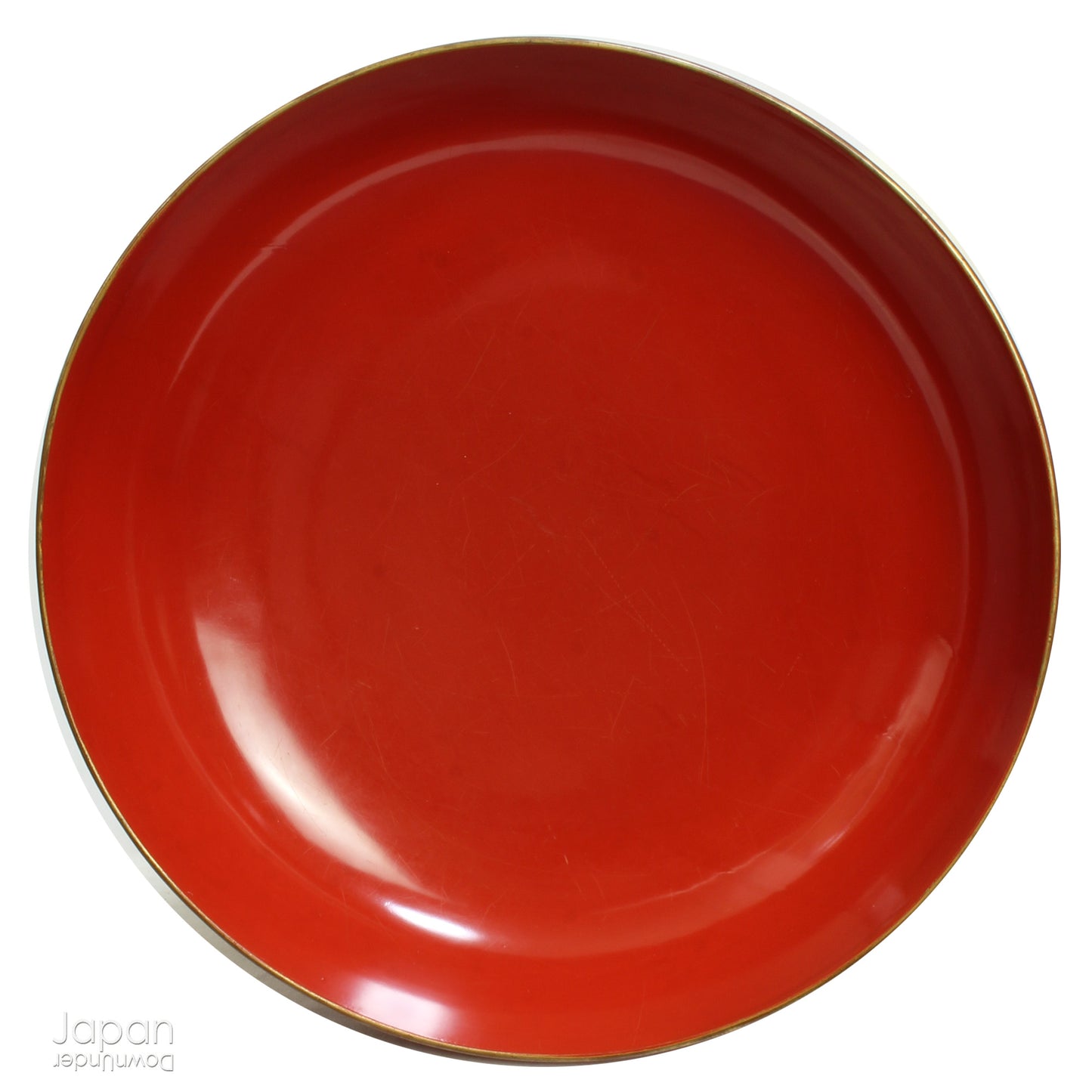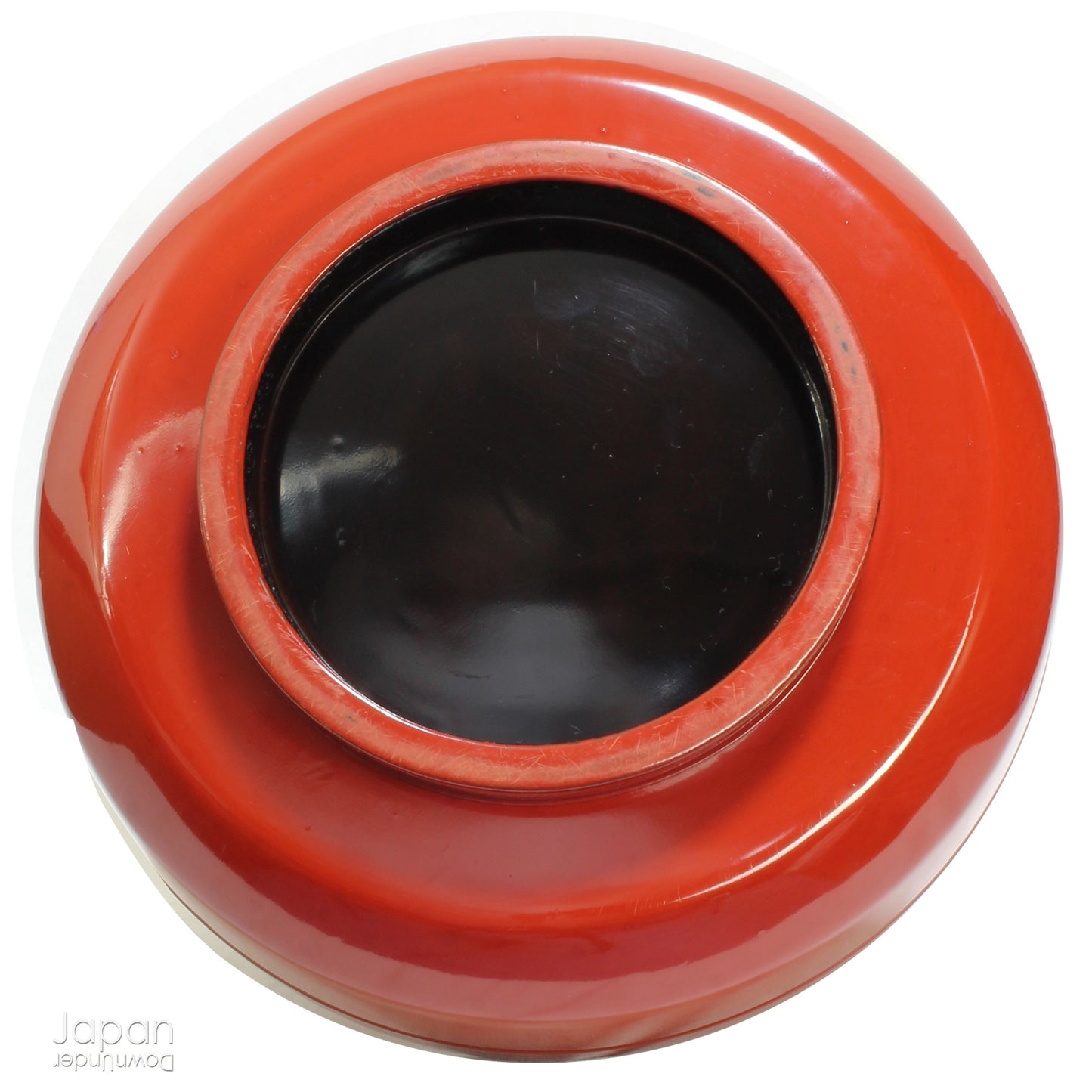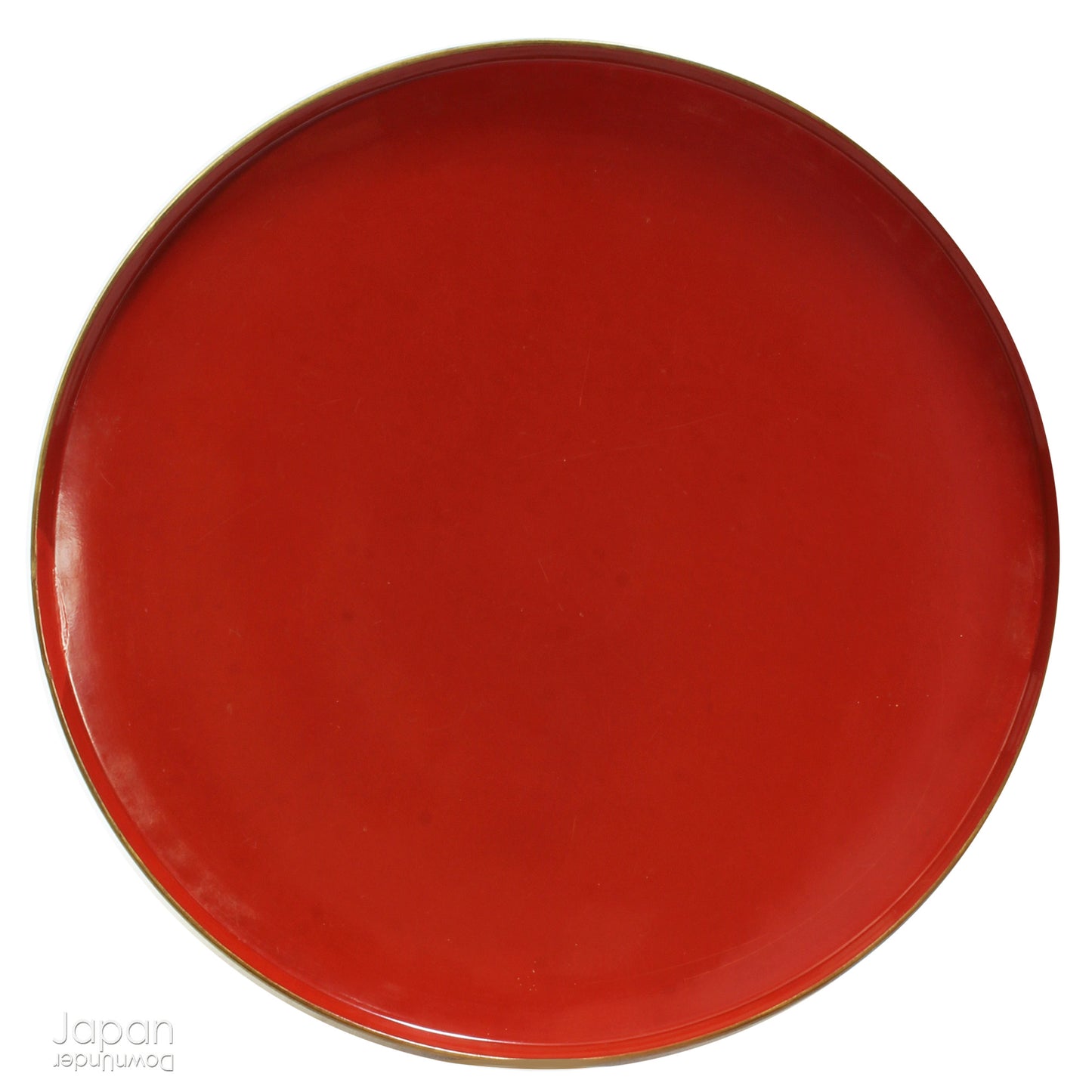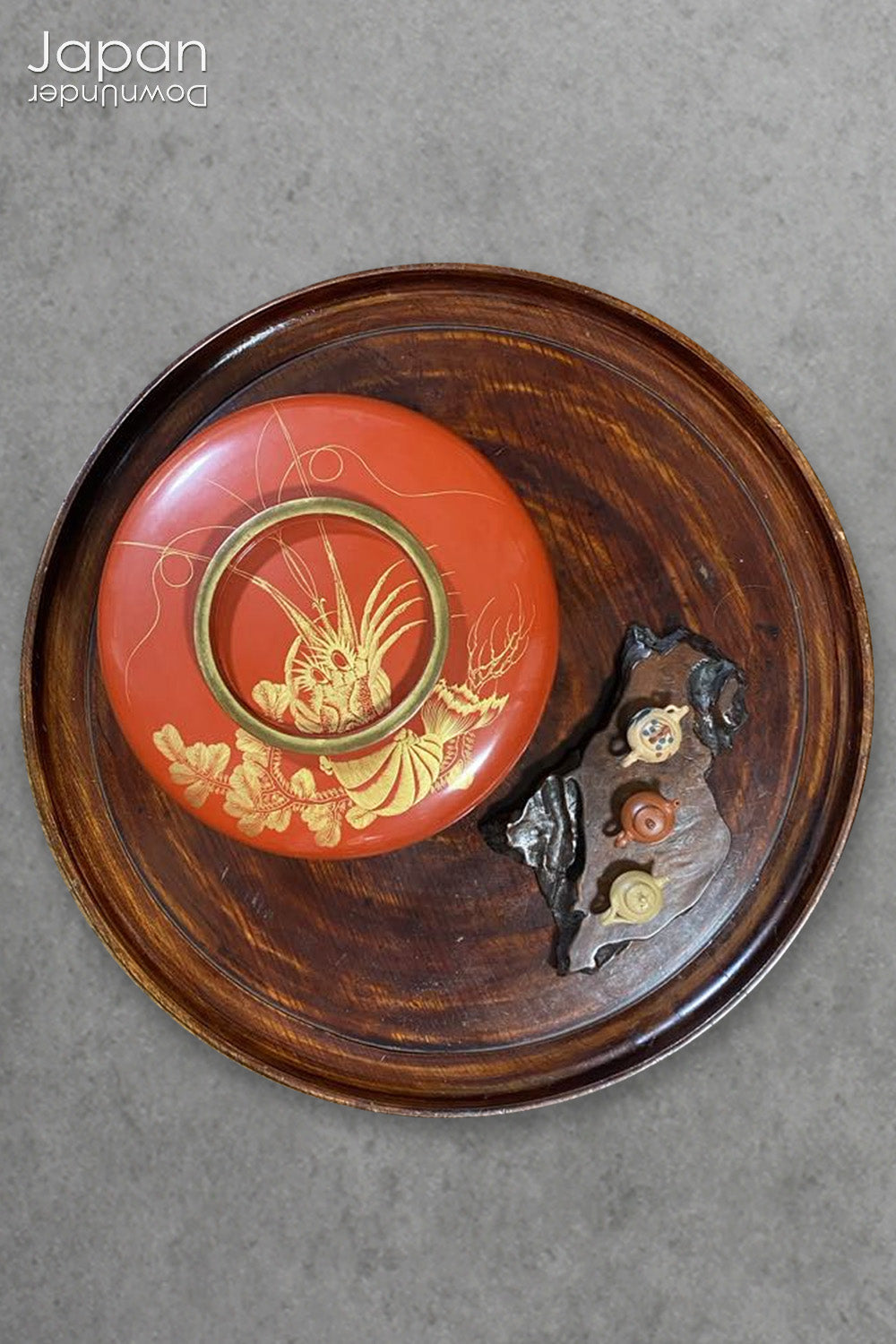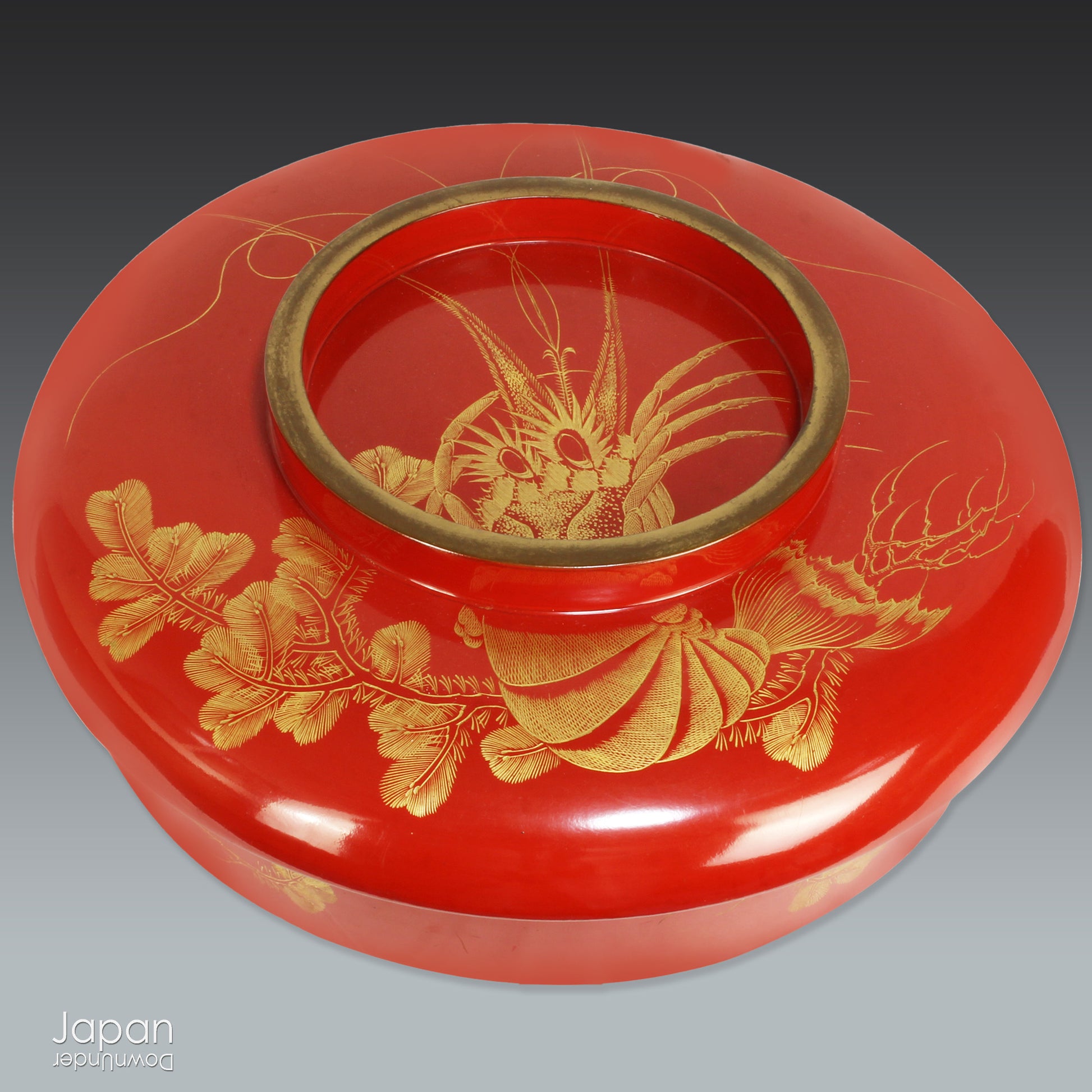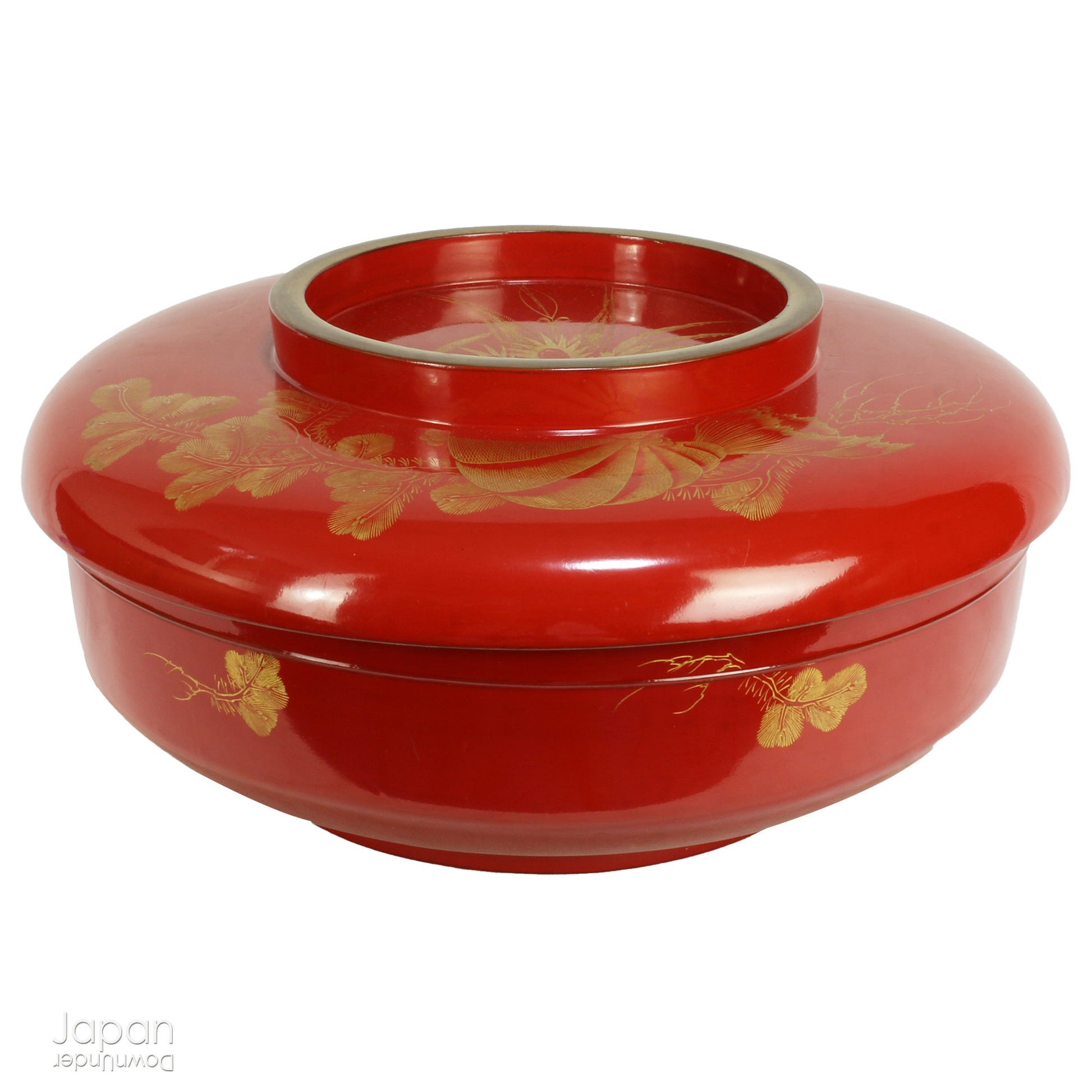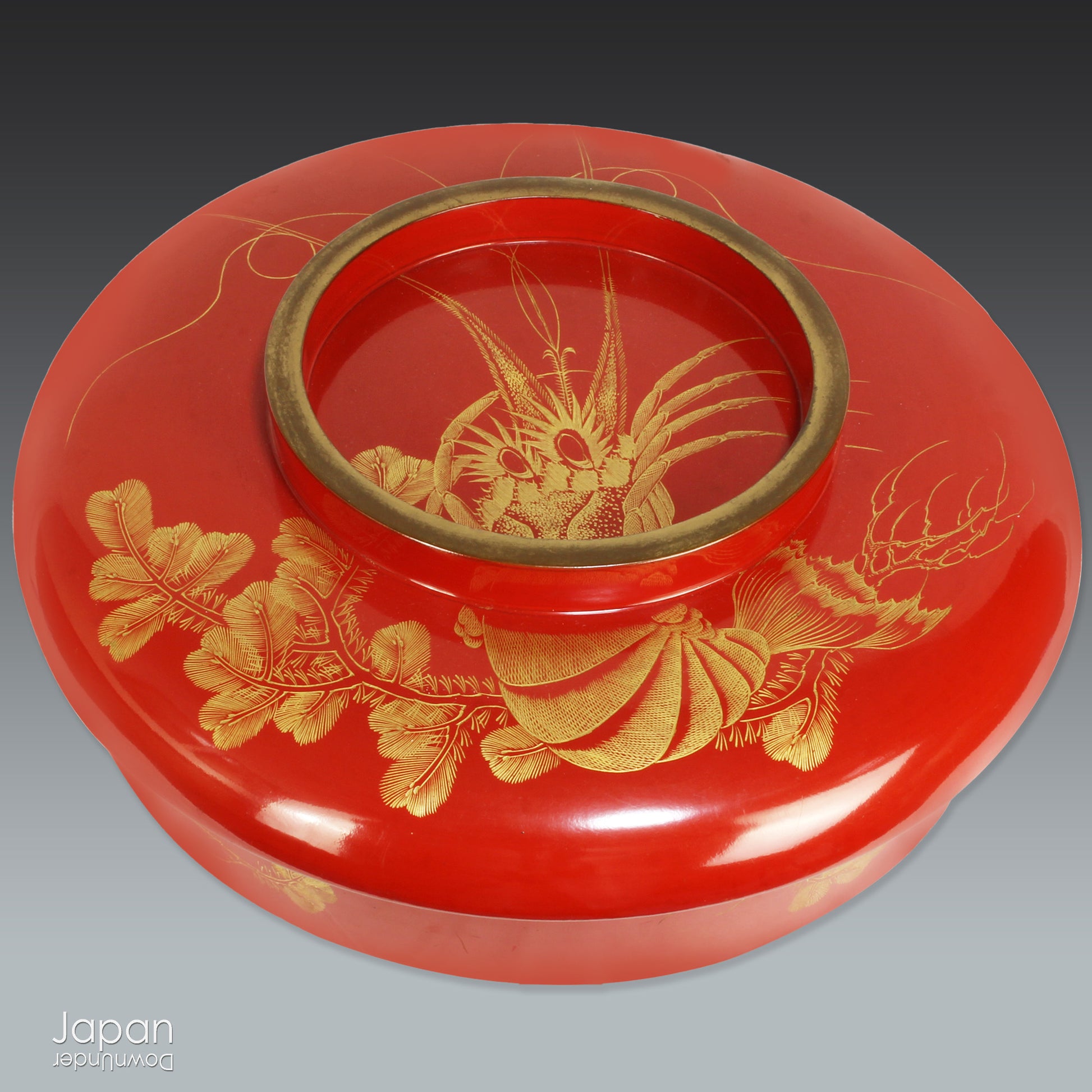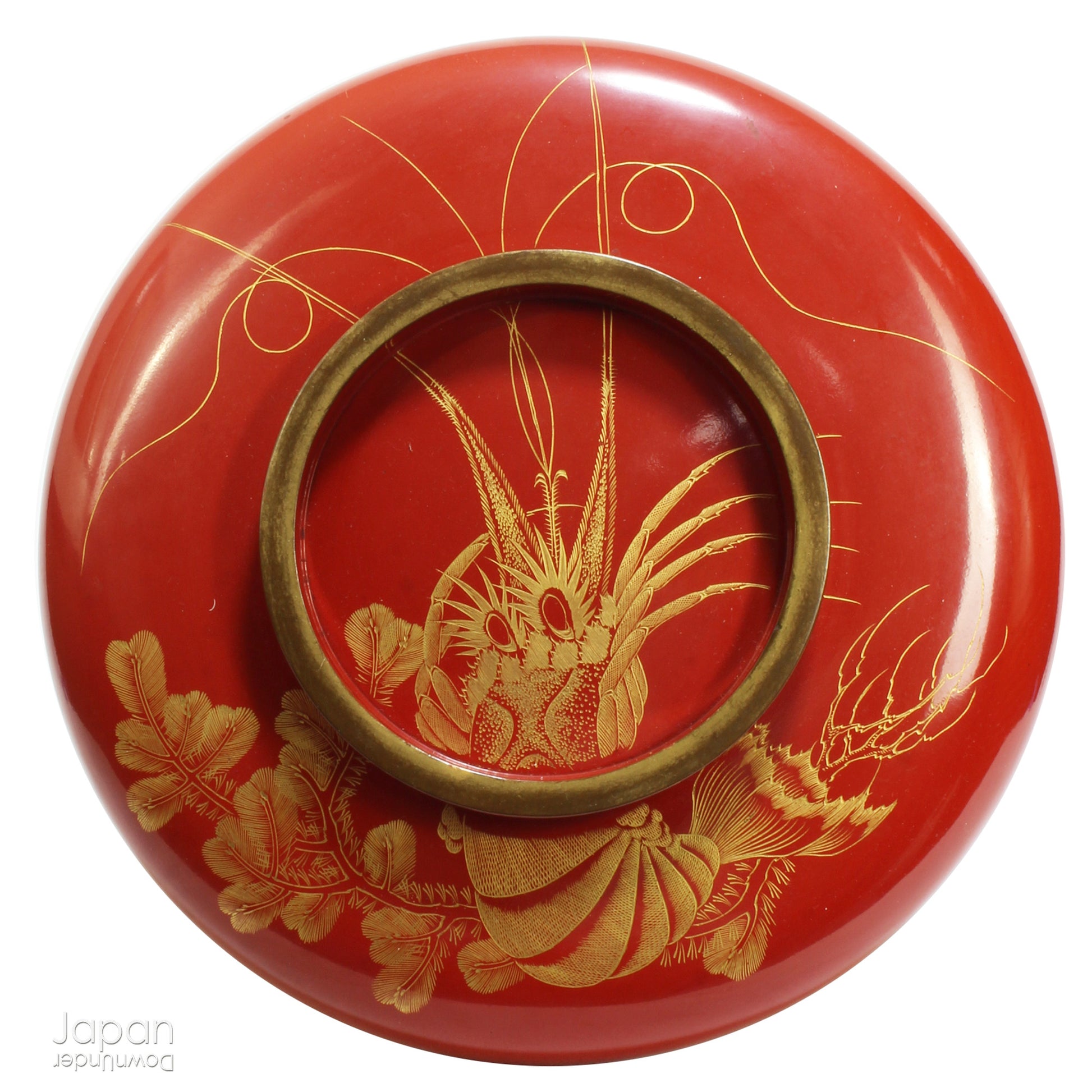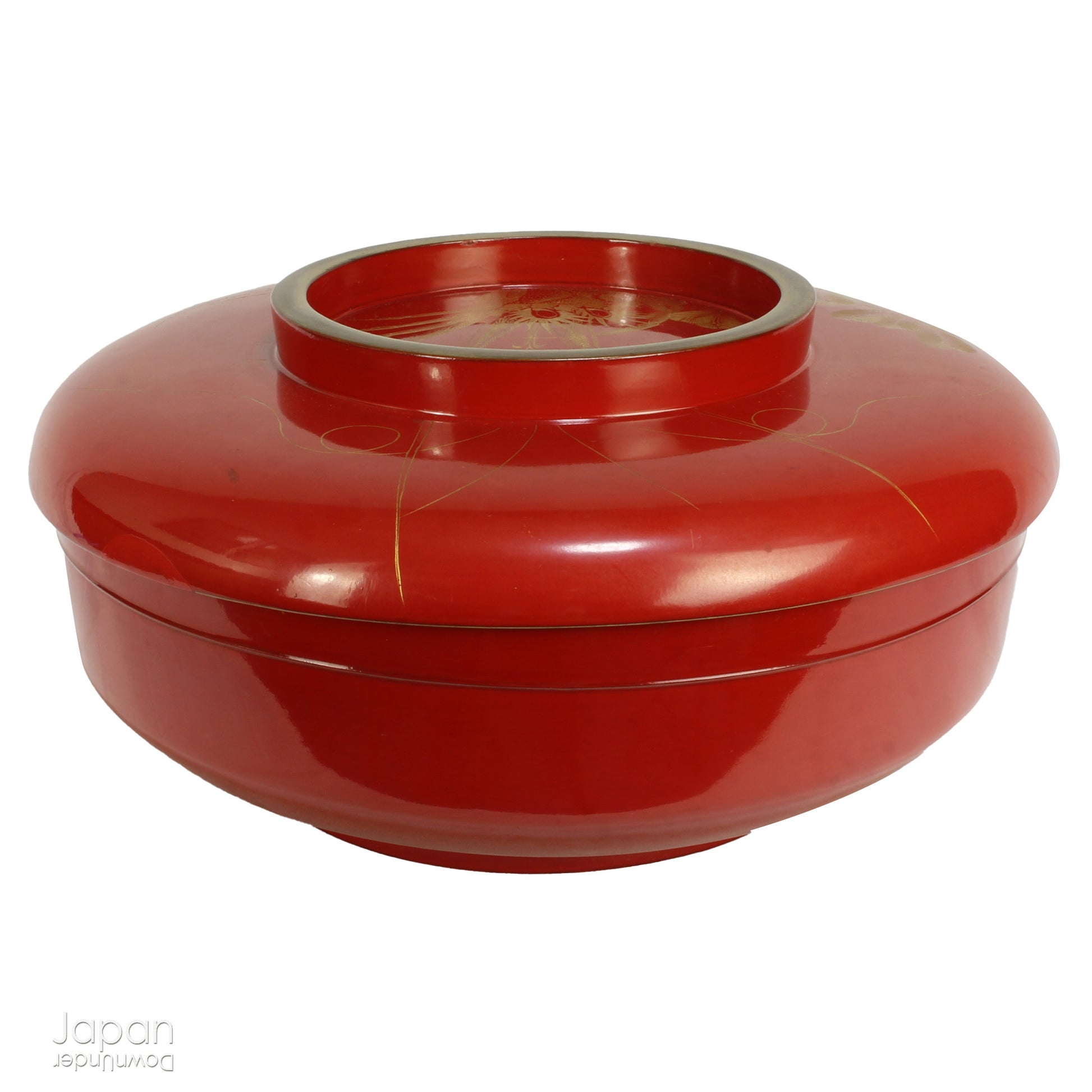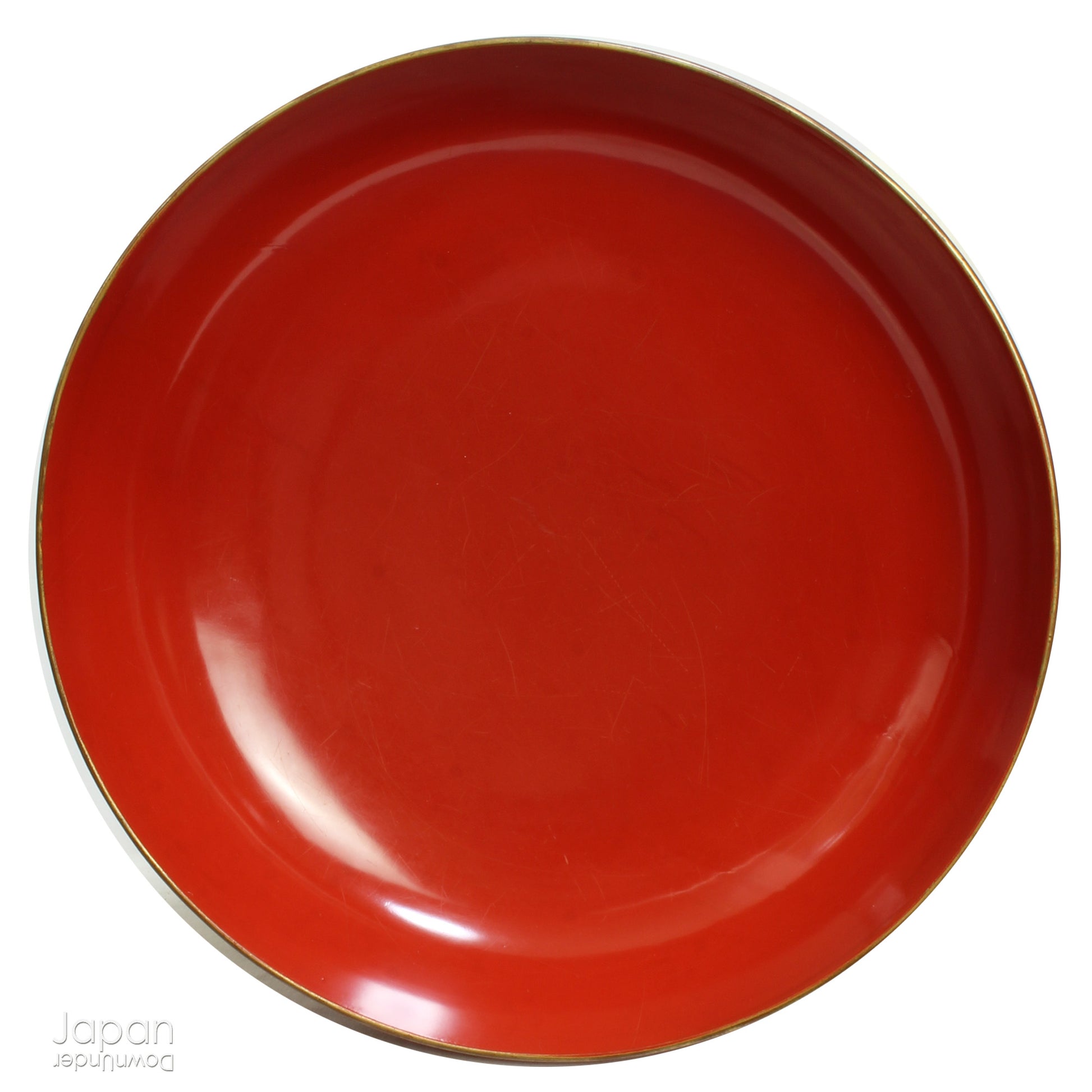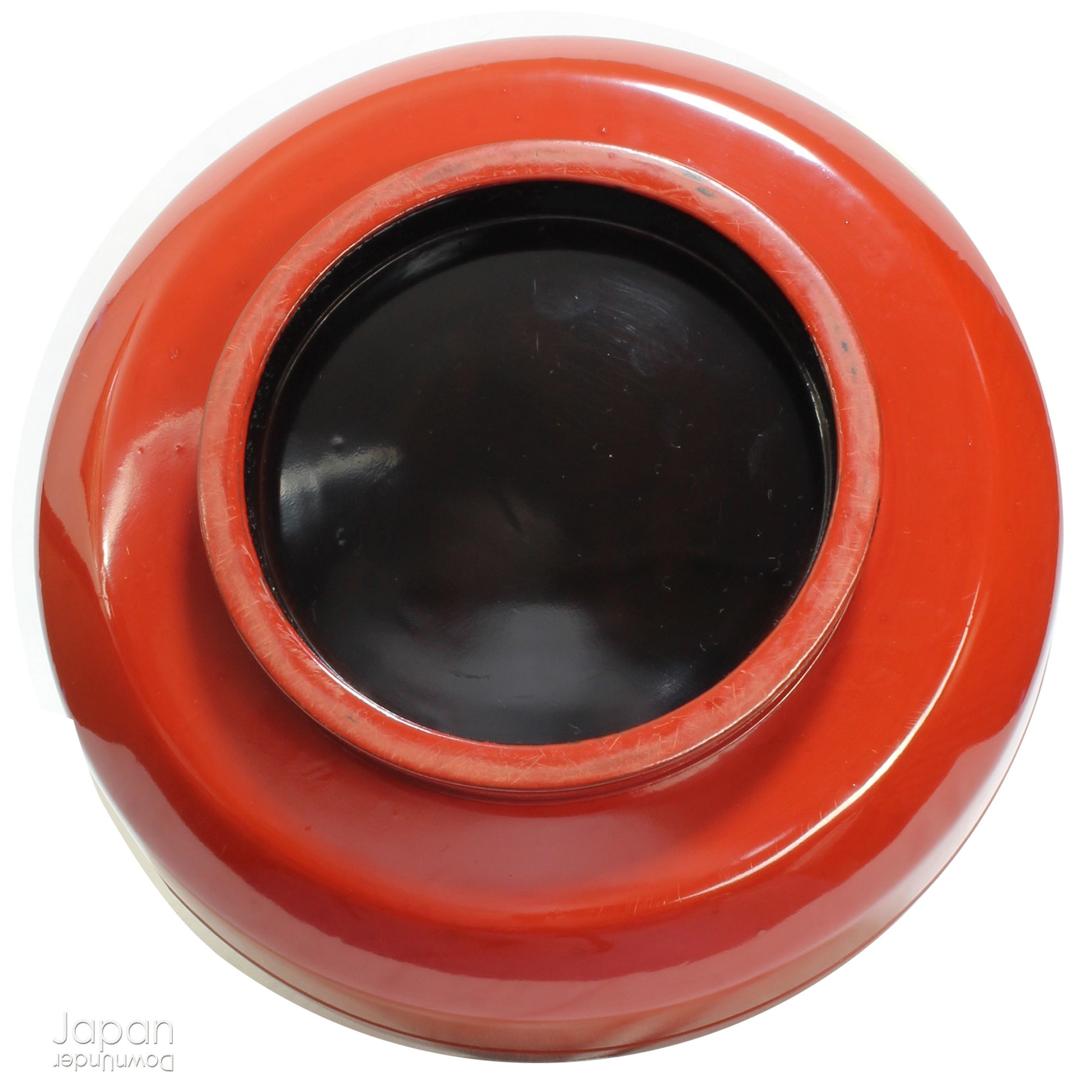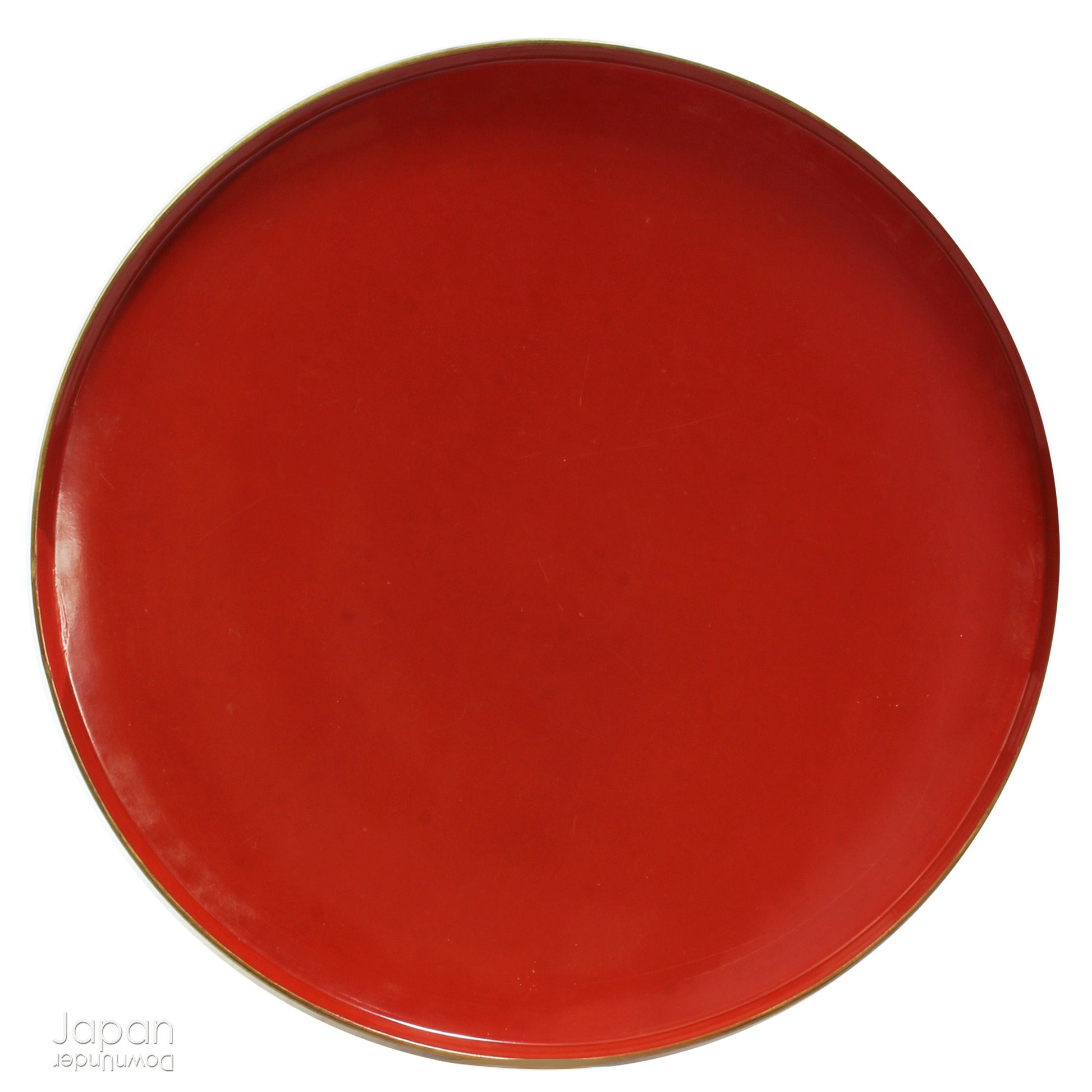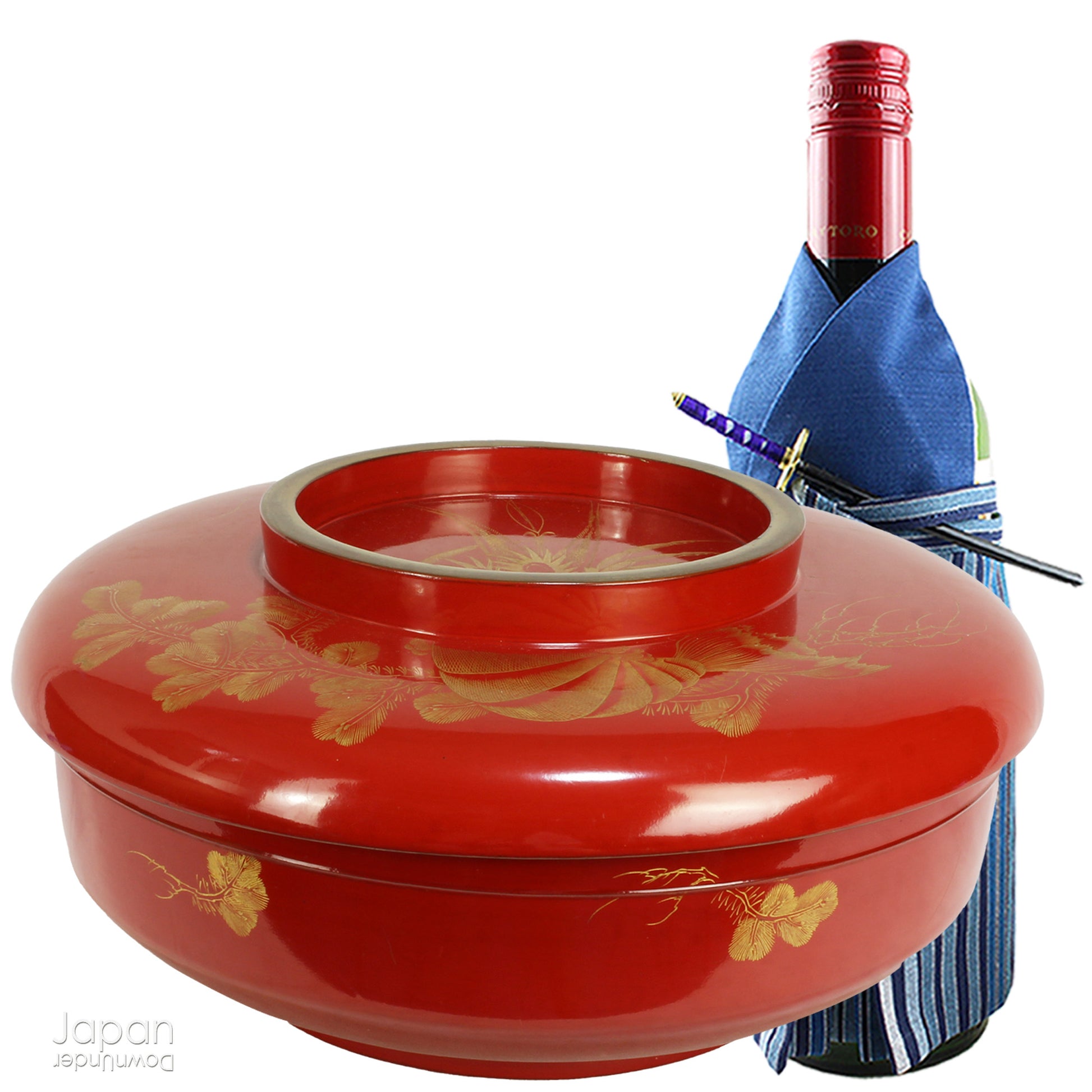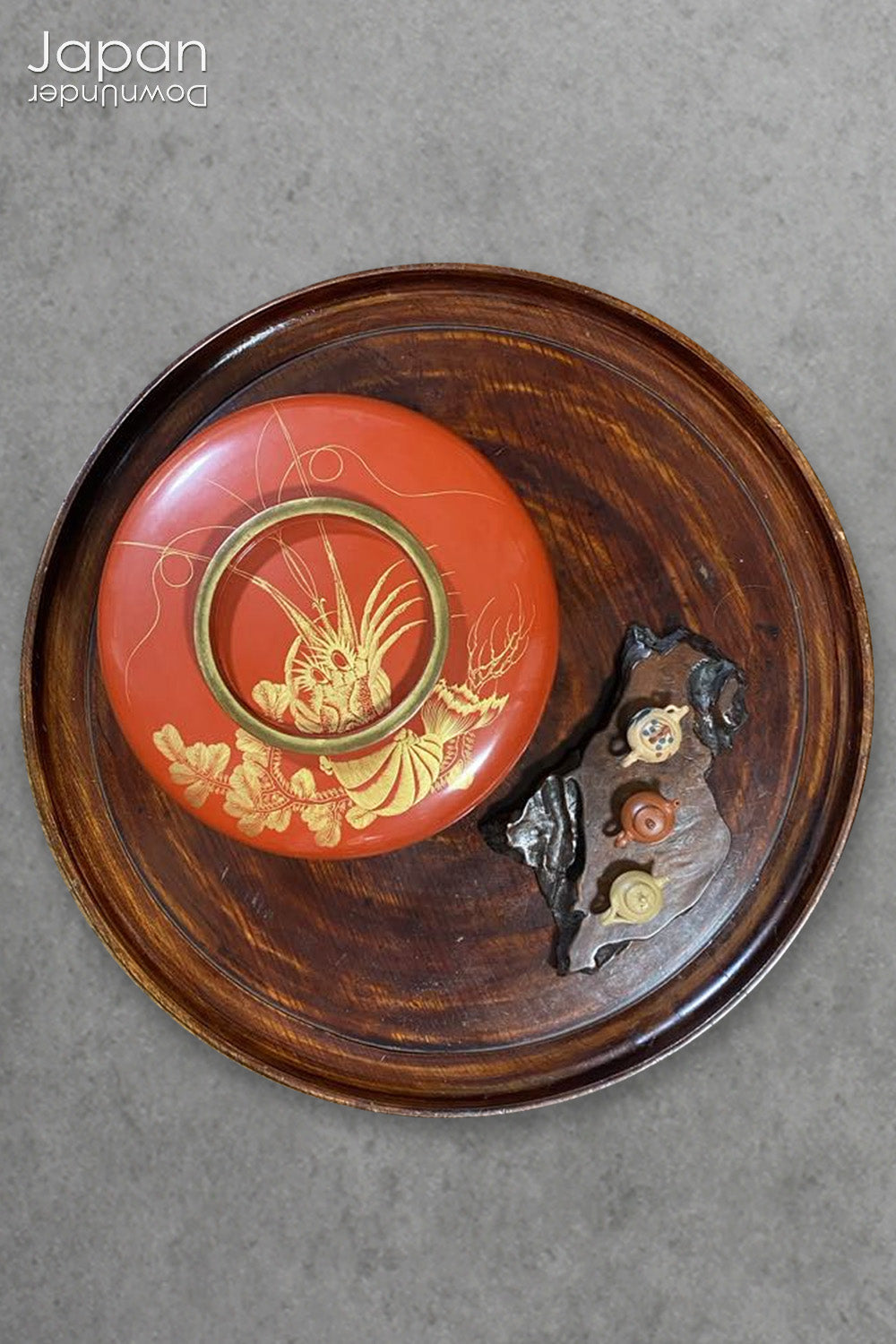JapanDownUnder
antique japanese red lacquer lidded bowl with gold lobster and pine tree art
antique japanese red lacquer lidded bowl with gold lobster and pine tree art
Couldn't load pickup availability
Love Japanese Style Like We Do
A refined and exquisite example of Meiji-era artistry, this red lacquer lidded sweet bowl - known as an ohira - dates to 1894 (the 27th year of Meiji, Year of the Horse). Perfect as a statement piece or storage for small precious items, it embodies sophistication and charm, bringing a touch of traditional artistry and timeless elegance to your home.
Crafted in Wajima City, Ishikawa Prefecture, it showcases the renowned Wajima-nuri lacquer technique, celebrated for both its radiant finish and remarkable durability - achieved through the meticulous application of over 70 layers of lacquer.
Lacquered in a rich, deep red, the bowl is adorned with an intricate maki-e design in gleaming gold, depicting a Japanese lobster (ebi) entwined with branches of a pine tree. These motifs are steeped in tradition and symbolism: the lobster, with its arched back and long whiskers, evokes the image of a wise elder, representing longevity and happiness. The pine tree, resilient through all seasons, symbolizes renewal, endurance, and a bright future. These auspicious elements make the piece especially evocative of Japanese New Year celebrations.
This ohira - from the Japanese words “o” (large) and “hira” (flat with a lid) - has a pleasingly solid weight, typical of antique lacquerware. It remains in good antique condition, with minimal wear to the lacquer surface and a few light scratches on the interior. The lid has slight movement when resting atop the bowl.
Accompanying the bowl is its original wooden storage box, inscribed with the designation “medium size ohira,” the type of lacquer (Wajima-nuri), the artist’s signature, and the date. Though the box shows age-related wear - including insect damage, warping, and joint separation - it remains an important part of the bowl’s provenance and speaks to its historical significance.
A truly special collector’s piece, this sweet bowl embodies the refined beauty and symbolic richness of traditional Japanese craftsmanship.
- bowl measures around 29 cm (11.4”) in diameter 14 cm (5.5”) tall.
- box measures 33 cm (13”) x 33 cm (13”) x 17 cm (6.7”)
- bowl weighs 1,700 gm.
- total weight 3,921 gm.
(listing for boxed lacquer sweet bowl)
SHIPPING INFORMATION
- please read our shipping notes in shipping policy.
- we use recycle packaging and wrap for safety, rather than appearance.
ABOUT OUR VINTAGE, ANTIQUE AND OTHER ITEMS
We list pieces we feel are worthy of display. There may be scratches, dents, fading and signs of wear and tear. We try to explain the condition of each item exactly, but may miss something.
Information regarding the item and it’s age is obtained from dealers and our personal research. We do our best to give you the correct information but please be aware that we cannot guarantee this information.
Please message us prior to purchase with any questions you may have about our products.
THE PINE TREE IN JAPANESE CULTURE
The pine is known as the symbol of life. During the long winter the pine does not lose its leaves or it’s lush dark green color.
It represents longevity, virtue, youth, masculinity and power. During the Edo Period (1600 - 1867), the samurai liked to use pine tree branches as a form of decoration on their swords and armour. To them, it represented masculinity. In ancient days the Shinto belief was that the gods moved to Heaven on a pine tree. It was believed that the gods lived in huge pine trees on a beautiful volcanic mountain. In Japan, pine trees also are used as a boundary for sacred temples or shrines.
A pine tree represents the ability to weather hard times. The pine has the unique ability to withstand harsh winds and up to subzero temperatures. A pine tree’s roots are tenacious and will burrow deep to find their way to hold fast on even the craggiest, rock-strewn outcropping. They endure, no matter what the circumstances.
The pine tree is often used in bonsai and many of these small trees live to be one hundred years old! The pine tree is displayed - with bamboo- at New Year in Japan in a decoration called a 'kadomatsu'. Kadomatsu are meant to be temporary dwelling places for the gods. The pine tree, as evergreens, symbolize strength amidst adversity and the element of luck. Bamboo, because it sprouts quickly and straight upwards, also represents strength in overcoming hard times. In the latter part of January, kadomatsu are burned to appease and release the gods. The pine tree is iconic of the Japanese New Year, as a symbol of rebirth, renewal, and a bright, hopeful future.
After the devastating Tohoku earthquake (2011) and the following tsunami, the town of Rikuzentakata was left in ruin. The tsunami crushed everything in its path, leaving nothing behind but one lone pine to stand alone amongst a desert of destruction. It had been strong enough to withstand the grave impact of the tsunami’s force. The pine's resilience to the disaster quickly spread throughout Japan and the pine soon became known as The Miracle Pine. The Miracle Pine very much mirrors the traditional symbolic reference of the strong, mighty, and resilient evergreen pine within the Japanese culture.
WAJIMA LACQUER
Wajima lacquerware (called Wajima nuri in Japanese) is made in the city of Wajima, Ishikawa prefecture. The most notable features of Wajima lacquerware are not only it’s beautiful finish but also the high quality powder used for its production called jinoko (powdered diatomaceous soil), which can be found only in Wajima. Because of the use of jinoko as an undercoat, the lacquerware's high durability is ensured. Wajima-nuri lacquerware’s durability is also enhanced thanks to a painstaking process involving over 70 coats of lacquer.
Wajima lacquerware has a long history; in the Muromachi period (1336~1573), a monk from Negoro Temple in Kishu (present-day Wakayama Prefecture) introduced the lacquering technique to this area. The chinkin technique originated in the Kyoho period (1716~1736), and the maki-e technique was brought from Kanazawa and Kyoto during the late Edo period and early Meiji period. These and other traditional techniques have been handed down in Wajima.
Wajima lacquer was designated a traditional craft in 1975 by the government of Japan.
Share
